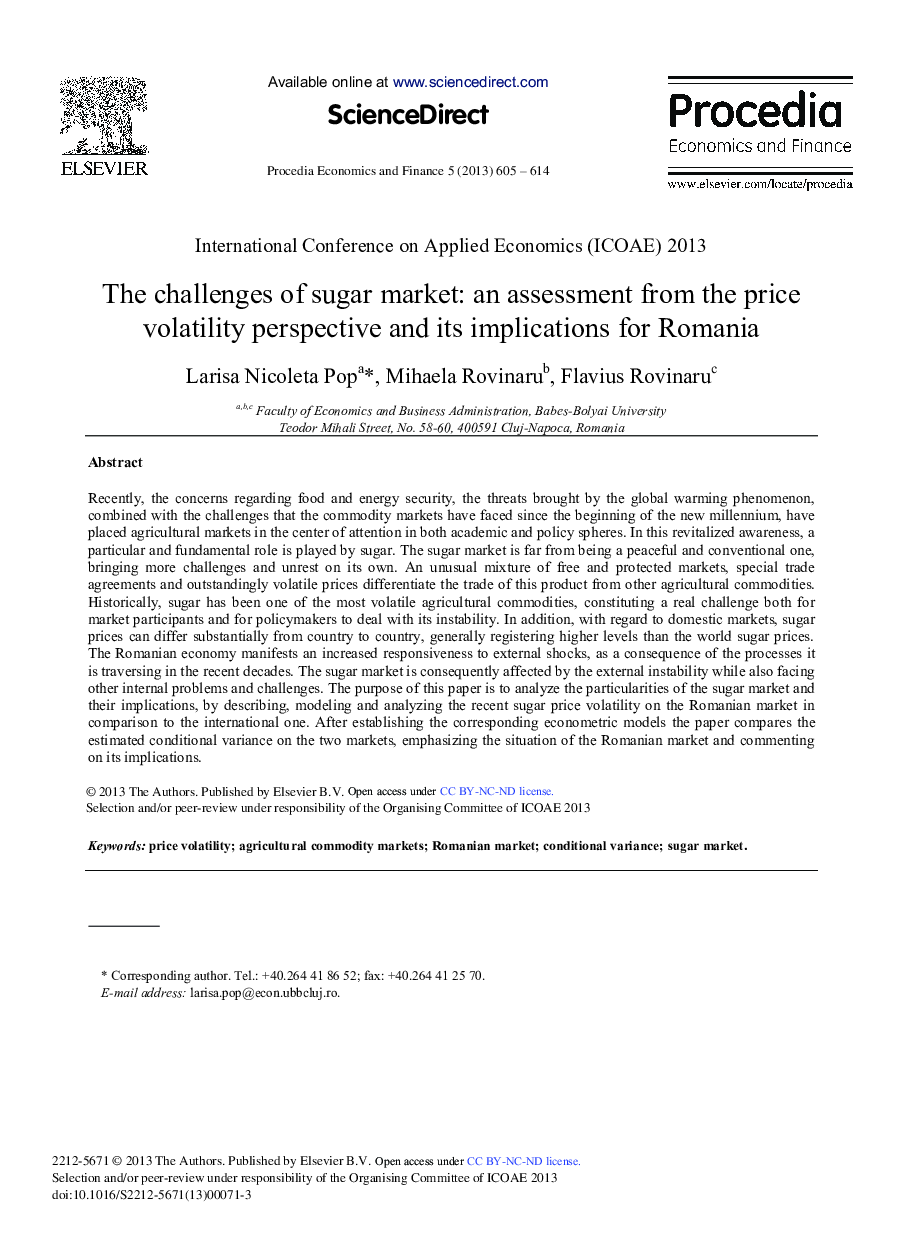| Article ID | Journal | Published Year | Pages | File Type |
|---|---|---|---|---|
| 981954 | Procedia Economics and Finance | 2013 | 10 Pages |
Recently, the concerns regarding food and energy security, the threats brought by the global warming phenomenon, combined with the challenges that the commodity markets have faced since the beginning of the new millennium, have placed agricultural markets in the center of attention in both academic and policy spheres. In this revitalized awareness, a particular and fundamental role is played by sugar. The sugar market is far from being a peaceful and conventional one, bringing more challenges and unrest on its own. An unusual mixture of free and protected markets, special trade agreements and outstandingly volatile prices differentiate the trade of this product from other agricultural commodities. Historically, sugar has been one of the most volatile agricultural commodities, constituting a real challenge both for market participants and for policymakers to deal with its instability. In addition, with regard to domestic markets, sugar prices can differ substantially from country to country, generally registering higher levels than the world sugar prices. The Romanian economy manifests an increased responsiveness to external shocks, as a consequence of the processes it is traversing in the recent decades. The sugar market is consequently affected by the external instability while also facing other internal problems and challenges. The purpose of this paper is to analyze the particularities of the sugar market and their implications, by describing, modeling and analyzing the recent sugar price volatility on the Romanian market in comparison to the international one. After establishing the corresponding econometric models the paper compares the estimated conditional variance on the two markets, emphasizing the situation of the Romanian market and commenting on its implications.
